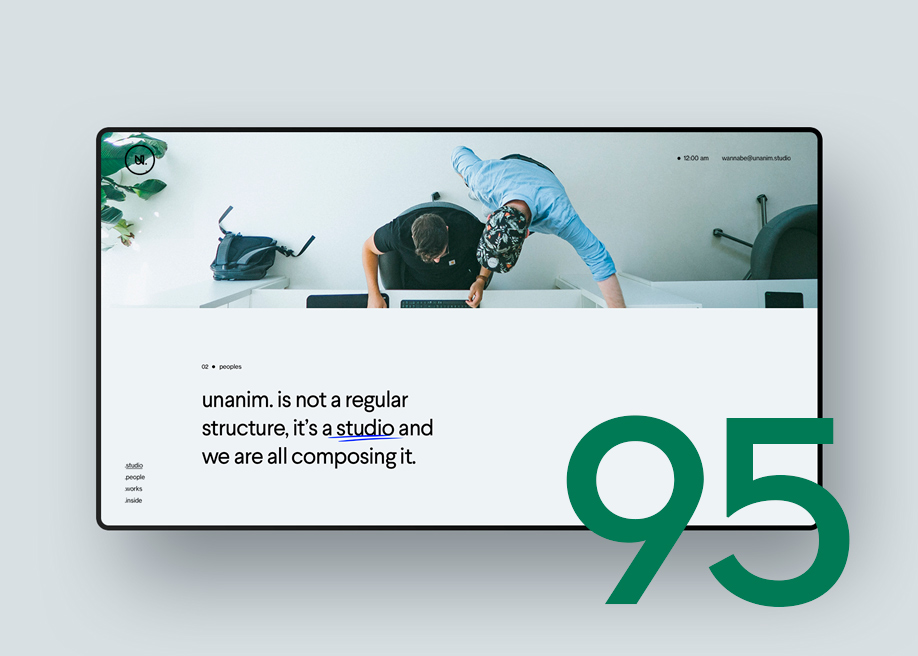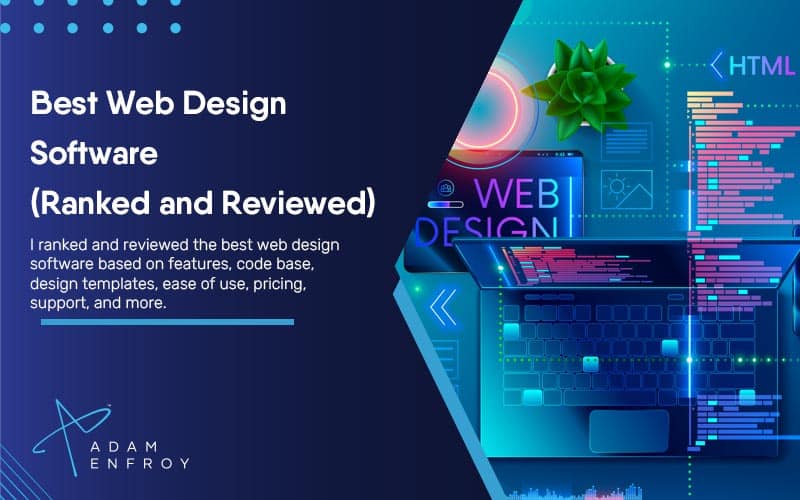All Categories
Featured
Table of Contents
- – The Leader In Website Design – Squarespace Tip...
- – Web Design Services - Verizon Small Business ...
- – What Is Web Design? - Interaction Design Foun...
- – Why Good Web Design Is Important, And Why You...
- – Web Design - The First 100 Years - Idle Words...
- – Top Web Design Courses Online - Updated [Apri...
- – Web Design - The First 100 Years - Idle Word...
- – Web Design Software By Xara Tips and Tricks:
- – Web Design Software By Xara Tips and Tricks:
- – Indianapolis Web Design And Digital Marketin...
- – Webpage Design (Article) - Further Learning ...
The Leader In Website Design – Squarespace Tips and Tricks:
Quick summary Usability and the utility, not the visual style, figure out the success or failure of a site. Given that the visitor of the page is the only person who clicks the mouse and for that reason chooses everything, user-centric style has actually established as a basic approach for effective and profit-oriented website design - web design frederick md.
and the energy, not the visual design, determine the success or failure of a website. Considering that the visitor of the page is the only person who clicks the mouse and for that reason decides whatever, user-centric design has become a standard approach for successful and profit-oriented website design. If users can't use a function, it might as well not exist.
g. where the search box should be placed) as it has already been done in a number of posts; rather we focus on the techniques which, utilized effectively, can result in more sophisticated style decisions and streamline the process of viewing provided details. Please notice that you might be thinking about the usability-related short articles we have actually released prior to: Principles Of Excellent Website Design And Reliable Web Style Standards, In order to utilize the concepts correctly we first require to understand how users communicate with sites, how they believe and what are the basic patterns of users' habits.
Web Design Services - Verizon Small Business Essentials Tips and Tricks:
Visitors glimpse at each brand-new page, scan a few of the text, and click the first link that catches their interest or vaguely resembles the important things they're searching for. In truth, there are large parts of the page they do not even take a look at. Most users look for something intriguing (or useful) and clickable; as quickly as some appealing prospects are discovered, users click.
If a page offers users with premium material, they are prepared to jeopardize the material with advertisements and the style of the website. This is the reason not-that-well-designed websites with top quality material get a lot of traffic over years. Content is more crucial than the design which supports it.

Users do not check out, they scan. Notification how "hot" areas abrupt in the middle of sentences. This is typical for the scanning process. Really basic concept: If a site isn't able to satisfy users' expectations, then designer stopped working to get his job done appropriately and the business loses cash. The higher is the cognitive load and the less intuitive is the navigation, the more prepared are users to leave the website and search for alternatives.
What Is Web Design? - Interaction Design Foundation (Ixdf) Tips and Tricks:
Neither do they scan web page in a direct style, going sequentially from one site area to another one. Instead users satisfice; they select the first reasonable alternative. As soon as they discover a link that appears like it might cause the objective, there is an excellent possibility that it will be immediately clicked.
It doesn't matter to us if we comprehend how things work, as long as we can use them. If your audience is going to act like you're developing signboard, then design excellent billboards." Users want to be able to control their browser and depend on the consistent data discussion throughout the website.
If the navigation and site architecture aren't intuitive, the number of question marks grows and makes it harder for users to understand how the system works and how to get from point A to point B. A clear structure, moderate visual hints and easily identifiable links can assist users to discover their course to their objective.
Why Good Web Design Is Important, And Why You Need It Tips and Tricks:

Since users tend to check out websites according to the "F"-pattern, these three declarations would be the very first aspects users will see on the page once it is filled. The style itself is easy and user-friendly, to comprehend what the page is about the user needs to browse for the answer.
When you have actually attained this, you can communicate why the system works and how users can take advantage of it. People won't utilize your web site if they can't discover their way around it. 2. Don't Misuse Users' Perseverance, In every project when you are going to offer your visitors some service or tool, try to keep your user requirements very little.
First-time visitors are prepared to, not filling long web forms for an account they might never ever utilize in the future. Let users check out the website and discover your services without forcing them into sharing private data. It's not sensible to require users to go into an e-mail address to evaluate the function.
Web Design - The First 100 Years - Idle Words Tips and Tricks:
And that's what you desire your users to feel on your web site. The registration can be done in less than 30 seconds as the form has horizontal orientation, the user does not even require to scroll the page.
A user registration alone is sufficient of an obstacle to user navigation to cut down on inbound traffic. Manage To Focus Users' Attention, As websites provide both fixed and vibrant content, some elements of the user interface attract attention more than others do.
Focusing users' attention to particular areas of the website with a moderate usage of visual components can assist your visitors to obtain from point A to point B without thinking about how it in fact is supposed to be done. The less enigma visitors have, the they have and the more trust they can develop towards the company the site represents.
Top Web Design Courses Online - Updated [April 2022] - Udemy Tips and Tricks:
4. Pursue Feature Exposure, Modern website design are normally criticized due to their method of assisting users with aesthetically appealing 1-2-3-done-steps, large buttons with visual results and so on. From the design point of view these elements actually aren't a bad thing. On the contrary, such as they lead the visitors through the site content in a really simple and easy to use method.
The website has 9 primary navigation options which are noticeable at the very first glance. What matters is that the content is well-understood and visitors feel comfy with the way they connect with the system.
Rather a price: simply what visitors are looking for. An optimal option for efficient writing is touse short and succinct expressions (come to the point as quickly as possible), use scannable design (categorize the material, utilize numerous heading levels, utilize visual aspects and bulleted lists which break the flow of uniform text blocks), use plain and unbiased language (a promo doesn't need to sound like ad; provide your users some affordable and unbiased reason why they ought to utilize your service or stay on your website)6.
Web Design - The First 100 Years - Idle Words Tips and Tricks:
Users are hardly ever on a site to delight in the design; furthermore, in the majority of cases they are looking for the information regardless of the design - web design frederick md. Aim for simplicity instead of intricacy. From the visitors' point of view, the very best website design is a pure text, without any advertisements or additional content blocks matching exactly the query visitors used or the content they've been trying to find.
Finch clearly provides the information about the website and offers visitors a choice of choices without overcrowding them with unnecessary content. 7. Do not Be Scared Of The White Space, Really it's truly tough to overstate the importance of white space. Not just does it help to for the visitors, however it makes it possible to perceive the info presented on the screen.
Complex structures are harder to read, scan, examine and work with. If you have the option between separating two design sections by a noticeable line or by some whitespace, it's normally better to use the whitespace service. (Simon's Law): the better you manage to provide users with a sense of visual hierarchy, the simpler your content will be to perceive.
Web Design Software By Xara Tips and Tricks:
The exact same conventions and guidelines must be applied to all elements.: do the most with the least quantity of cues and visual elements. Clearness: all parts ought to be designed so their significance is not uncertain.
Conventions Are Our Buddies, Standard style of website components does not result in an uninteresting website. In reality, as they decrease the learning curve, the requirement to determine how things work. It would be an usability problem if all sites had various visual discussion of RSS-feeds. That's not that various from our regular life where we tend to get used to basic principles of how we arrange information (folders) or do shopping (placement of items).
comprehend what they're expecting from a website navigation, text structure, search positioning etc. A common example from use sessions is to equate the page in Japanese (assuming your web users don't know Japanese, e. g. with Babelfish) and offer your functionality testers with a task to find something in the page of different language.
Web Design Software By Xara Tips and Tricks:
Test Early, Test Typically, This so-called TETO-principle should be used to every web style task as use tests frequently supply into substantial issues and issues related to a provided layout. Test not too late, not too little and not for the incorrect reasons.
Some essential indicate remember: according to Steve Krug, and testing one user early in the task is much better than testing 50 near completion. Accoring to Boehm's first law, errors are most frequent during requirements and style activities and are the more pricey the later on they are gotten rid of.
That implies that you design something, test it, repair it and after that check it again. There might be problems which haven't been discovered throughout the first round as users were practically obstructed by other issues. functionality tests. Either you'll be pointed to the issues you have or you'll be indicated the lack of major design defects which remains in both cases a helpful insight for your task.
Indianapolis Web Design And Digital Marketing Agency Tips and Tricks:

This holds for designers. After you have actually worked on a website for few weeks, you can't observe it from a fresh perspective anymore. You understand how it is developed and for that reason you understand precisely how it works you have the knowledge independent testers and visitors of your website wouldn't have.
It can be connected to other areas such as graphic design, user experience, and multimedia arts, however is more aptly seen from a technological perspective. It has actually become a big part of individuals's daily lives. It is difficult to envision the Web without animated graphics, various styles of typography, background, videos and music.

During 1991 to 1993 the World Wide Web was born. Text-only pages could be seen utilizing a basic line-mode browser. There had actually been no integrated technique to graphic design elements such as images or noises.
Webpage Design (Article) - Further Learning - Khan Academy Tips and Tricks:
The W3C was created in October 1994 to "lead the World Wide Web to its complete potential by establishing typical procedures that promote its evolution and ensure its interoperability." This prevented any one business from monopolizing a propriety web browser and shows language, which could have changed the impact of the Internet as a whole.
As this has taken place the innovation of the web has also moved on. There have also been significant changes in the way individuals use and access the web, and this has actually altered how websites are developed.
Learn more about Lovell Media Group LLC or TrainACETable of Contents
- – The Leader In Website Design – Squarespace Tip...
- – Web Design Services - Verizon Small Business ...
- – What Is Web Design? - Interaction Design Foun...
- – Why Good Web Design Is Important, And Why You...
- – Web Design - The First 100 Years - Idle Words...
- – Top Web Design Courses Online - Updated [Apri...
- – Web Design - The First 100 Years - Idle Word...
- – Web Design Software By Xara Tips and Tricks:
- – Web Design Software By Xara Tips and Tricks:
- – Indianapolis Web Design And Digital Marketin...
- – Webpage Design (Article) - Further Learning ...
Latest Posts
Google Web Designer - Home Tips and Tricks:
The Leader In Website Design – Squarespace Tips and Tricks:
Modern Website Designs - Best Web Page Designers Tips and Tricks:
More
Latest Posts
Google Web Designer - Home Tips and Tricks:
The Leader In Website Design – Squarespace Tips and Tricks:
Modern Website Designs - Best Web Page Designers Tips and Tricks: